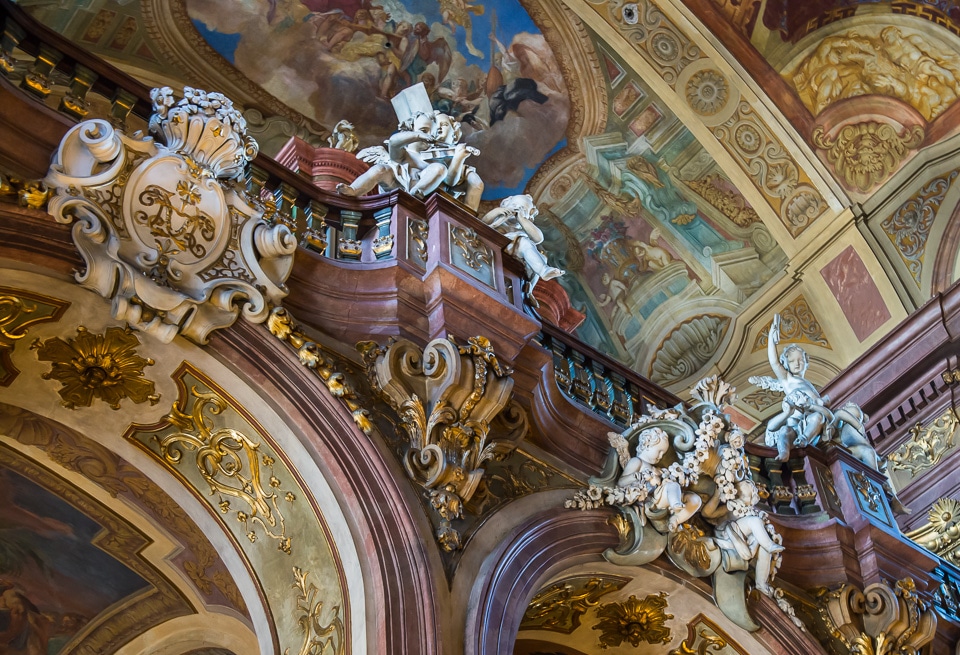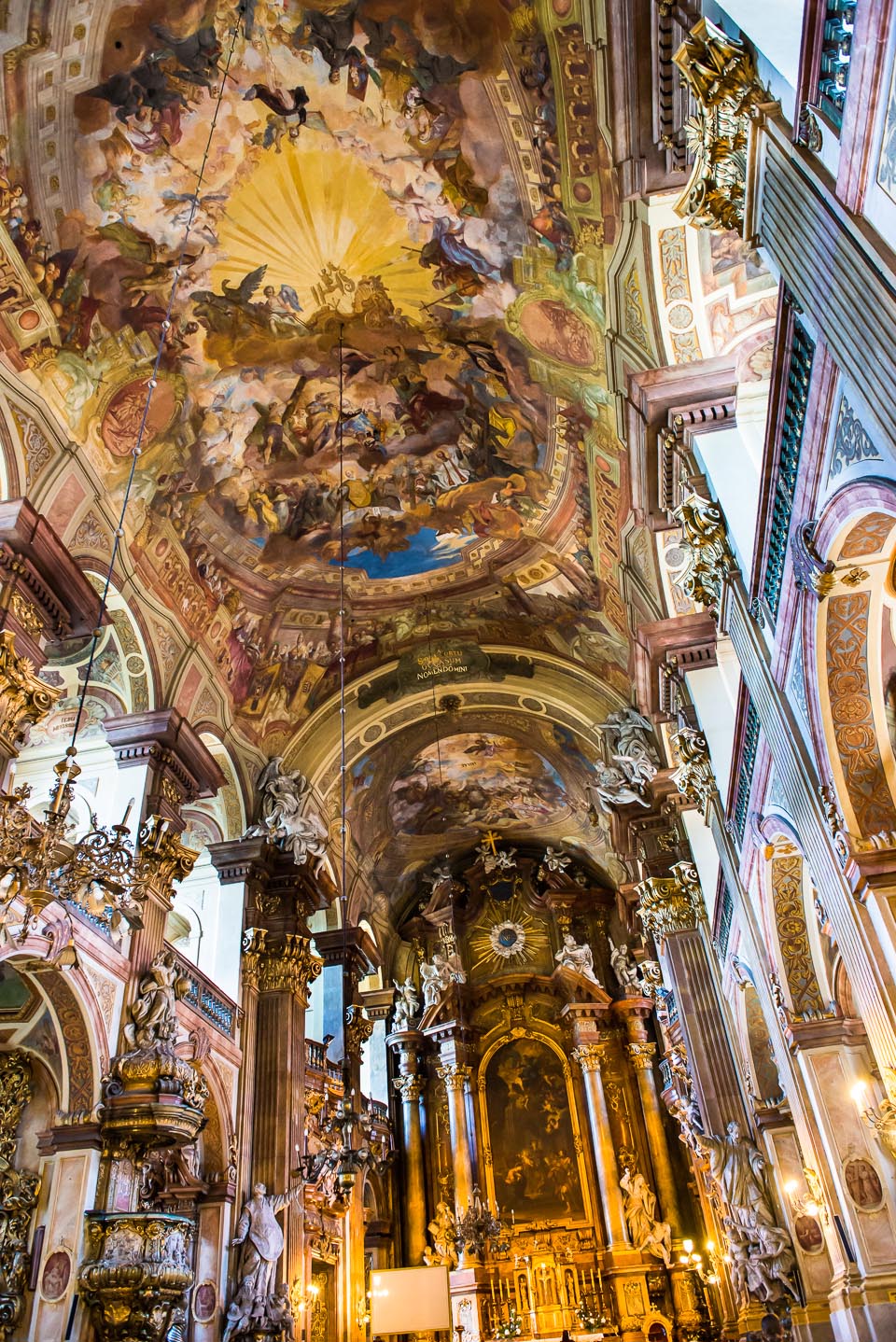
In Wroclaw, there's an island of churches which has, among others, the Cathedral of St. John the Baptist, and the Church of Sts. Peter and Paul. But just a short walk off the island is the Jesuit church of the Holy Name of Jesus. (It's also known as the Blessed Name of Jesus to some tourist books. Your choice, really. Sanctus in Latin can be translated either way. Or Saint. Sort of depends on the context.) It was built by the Jesuits starting in 1690 in the University area on the site of an old castle. As all you art history folks know, that era was when the Baroque, which was already pretty Baroque, was starting to go right over the top into the Rococo style. The Versailles Palace outside Paris is perhaps the most famous example of the gross excess of Rococo, but we'll leave politics out of this, because you know what happened to the last residents of that place.
This little detail is the front of the balcony.
Anyway, you might not agree with the Rococo taste, and if you're Protestant, you probably don't. But, to my mind, when it comes to church decoration, nothing succeeds like excess. And the Jesuits always excelled at excess.

The ceiling of the Church of the Holy Name is a cacophony of color, which is putting it mildly. One wonders what goes on in the mind of artists who pull off things like this. Is it ecstasy, or pure technique? One wonders how exactly do you do a rough draft of this, and then paint it on a curved surface, so that not only the color, but the perspective serves to pull you right off the ground into a heavenly vision?
Of course, that heavenly vision is just a little skewed because when you get to heaven, you get to the three letters IHS, which is a monogram of Jesus's name in Greek. But somehow a nice piece of calligraphy here isn't as cool as another representation of Jesus might have been. Would another figure of a man have been too much? A lamb? A heart?
Up Your Travel Skills
Looking to book your next trip? Use these resources that are tried and tested by us. First, to get our best travel tips, sign up for our email newsletter. Then, be sure to start your reading with our Resources Page where we highlight all the great travel companies and products that we trust. Travel Accessories: Check out our list of all the accessories we carry to make getting there and being there a lot easier. Credit Cards: See our detailed post on how to choose the right travel rewards credit card for you. Flights: Start finding the very best flight deals by subscribing to Thrifty Traveler. Book your Hotel: Find the best prices on hotels with Booking.com. See all of the gear and books we like in one place on our Amazon shop.Got a comment on this post? Join the conversation on Facebook, Instagram, or Threads and share your thoughts!

